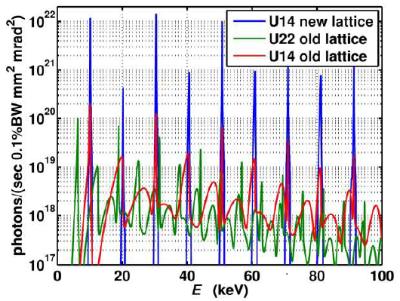- Home
- Users & Science
- Find a beamline
- Structure of materials
- ID31 - High-energy beamline for buried interface structure and materials processing
ID31 - High-energy beamline for buried interface structure and materials processing
Synopsis
ID31 is dedicated for interface and materials processing studies using high energy x-rays. It offers a portfolio of hard X-ray characterisation techniques including reflectivity, wide and small angle diffraction (both in transmission and grazing incidence geometry), imaging methods, auxiliary techniques, coupled with a great versatility in choosing beam sizes, energy and energy-band.
Status:
open
Disciplines
- Materials and Engineering
- Physics
- Chemistry
- Environmental Sciences
- Cultural Heritage
- Life Sciences
Applications
- Metallurgy
- Aerospace
- Catalysis
- Energy
Techniques
- XRD - X-ray diffraction
- Compton scattering
- XRR - X-ray reflectivity
- WAXS - wide-angle X-ray scattering
- GISAXS - grazing incidence small-angle scattering
- Pair-distribution function analysis
- GID - grazing incidence diffraction
- SAXS - small-angle X-ray scattering
Energy range
- 21.0 - 150.0 keV
Beam size
- Minimum (H x V) : 20.0 x 3.0 µm²
- Maximum (H x V) : 2.0 x 1.0 mm²
Sample environments
- Low temperature (1.2K)
- High temperature (2000K)
- High magnetic field (8T)
- Stress rigs (up to 50kN)
- Gas loading system
- Electrochemical cells
- Hydrogen Fuel Cell
- Fuel cell testing station
Detectors
- Pilatus3 X CdTe 2M
- Perkin Elmer XRD 1621
- MAXIPIX
- Dexela 2923
- 13-element solid-state Ge detector
Technical details
Technical description
Overall layout
X-ray source
In-vacum cryo-colled undulator with 14.5mm period (U14) is the source of photons at ID31. It provides the highest possible intensity in the energy range 20-150keV. Figure 2 compares the U14 with the U22 used at ID15.

Figure 2. The brightness of U14 compared to the U22 currently used at ID15.
OH1
White beam optics hutch holds: gas and solid absorbers, high power slits , transfocator , white beam viewer and beam mask.
OH2
The optics hutch 2 holds: high power slits, multilayer monochromator (for energies < 80 keV, 0.3% bandwidth), Laue-Laue monochromator (for energies > 50 keV, tunable bandwidth), white beam viewer, beam mask, monochromatic beam viewer, beam position monitors, transfocator, solid absorber, high power double slits, and beam shutter. All monochromatic beam equipments are on motorized long granite table to guarantee their simultaneous offset movement.
Focusing
The focusing optics consists of three transfocators: 1. white beam transfocator in optics hutch 1 (to condense the incident beam when very intense beams with medium range spot sizes are needed), 2. a monochromatic beam transfocator in optics hutch 2 (to focus a beam up to 3.0 x 20.0 µm² with low divergence), 3. a monochromatic beam transfocator in the experimental hutch to provide sub-micron beams (in the future).
EX1
The experimental hutch is a white beam hutch which holds: transfocator (in the future), high precision imaging and diffraction instrument (in the future), auxiliary detector table, high energy microdiffraction instrument (HEMD), WAXS and SAXS detector assemblies .
The experimental station can be easily converted for different experimental approaches.
Large area WAXS detector can be moved along 12m longitudinal granite beams supported by granite pillars, as well as sideways and vertical, allowing detector positioning in respect to the incident beam and moving detector out from the beam when downstream SAXS detector is used.
- High resolution diffraction and imaging instrument (in the future)
It is designed for experiments using very small beam (down to 200nm). It will house the third transfocator, a nano positioning sample tower and imaging detector setup, all on their own granite blocks.
- Heavy duty micro diffraction instrument
The existing HEMD instrument was moved to ID31 from ID15A. It is designed for reflectivity and diffraction measurements using few micron beams and allows using heavy sample environment equipments (up to 300kg).
The instrument includes the secondary optics to deflect the incident beam (liquid monchromator) and small area detector (or point detector) setup for in- and out-of plane scanning.



